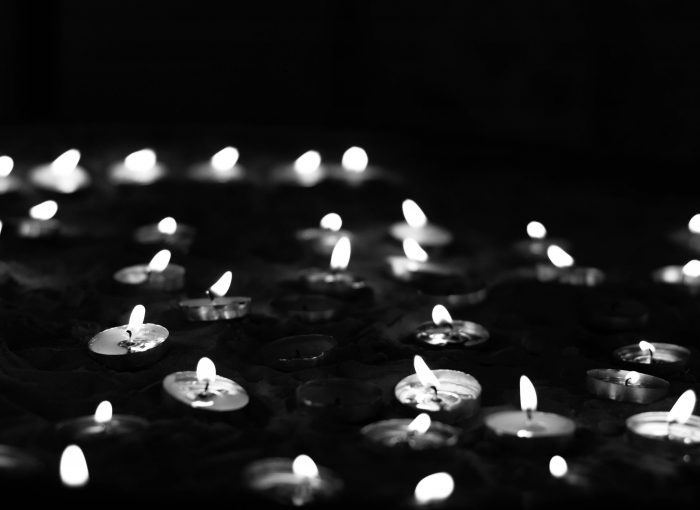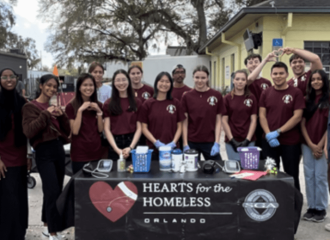By Avery Myers
“We live in unprecedented times.” In some iteration or another, this phraseology seems to inundate daily life now. Perhaps you call up an old acquaintance, and the two of you agree that “things are crazy.” Perhaps a public figure calls for optimism and solidarity, citing “these are unpredictable times.” Now, even children discuss the novelty of the days ahead. Their words carry the worldwide feeling of stress and uncertainty caused by COVID-19. These times are simply unprecedented to those who are alive today; yet, a quick look at history would show that deadly plagues and uncertainty are recurring obstacles in the human story. This truth, of course, is little consolation to those who are suffering today.
The American people seem to face an exceedingly hopeless situation. Country-wide, states have seen a depressing uptick in cases of the novel coronavirus. People, who once delighted in each other’s presence, fear the ‘other’ as a walking germ. Six epidemiologists polled in the New York Times went as far as to assert that people will never again be safe to hug their friends and family when greeting them. Skeptics, in contrast to the paranoid, opt to flagrantly discount their obligation to their fellow human beings. Even just recently, after municipalities in Central Florida mandated that masks be worn in public, bombastic displays of aggression and disregard have been recorded and disseminated online. Such chaos on both sides is indicative of a culture that is wholly individualistic. Psychologically, it can be inferred that, skeptic or not, the American people are being crushed under the weight of everything this year has brought them. This weight is the fear of death and disease.
Humanity’s oldest enemy is death itself. It is the one thing from which not even the luckiest can escape. Throughout history, plague and death were common occurrences in life. The solutions to such illnesses were markedly less intuitive than today, including bloodletting and the ostracization of infected persons, among others. According to French historians Mafart and Perret, the first documented institutional efforts at combatting disease in Europe began in the 1300s during the infamous Plague. These measures included quarantining, separation of persons (akin to social distancing without the trendy moniker), and bills of health required for travelers.
Long before that, ancient societies had developed their own set of precautions to avoid the spread of disease. Epidemics were prevalent in the time of the Shang Dynasty (BCE 1600-1046), and for these, doctors would treat individuals with a mix of occultic practices and Chinese herbal medicine. Ancient religious texts such as the Jewish Tanakh detail a meticulous procedure for community handling of disease. Ancient Egyptian burial practices emphasize the danger that corpses posed to community health. Suffice it to say, diseases much more hopeless than coronavirus have graced the earth many times before. Modern techniques, though imperfect as they are, have significantly more success in containing illness compared to ancient ways. Scientific developments have only gotten better. Yet, in the face of that knowledge, these pervasive feelings of hopelessness and dread still prevail. What, then, is lacking now?
As stated previously, American society is individualistic. The deeper one proceeds into modern America, the more individualistic it becomes. A UCLA survey of 20,000 participants finds that nearly half of U.S. adults would describe themselves as “lonely,” with two-fifths saying they have no meaningful relationships in their lives. When people grow lonely and feel purposeless, partisanship and frustration grow stronger. An unhealthy society breeds further pessimism—an emotional miasma.
Miasma was an ancient, theoretical cause of disease, notorious to the public as noxious, evil air on which diseases floated across the world and transmitted to other people. Although miasma theory is largely obsolete in the face of modern virology, this dark, suffocating wind is an excellent metaphor when it comes to analyzing the condition of an unhealthy society and relates to the seemingly contradictory American response to the coronavirus pandemic.
While signs emblazoned with “thank you, essential workers” have flooded the outdoors, the American communal response to coronavirus has been paranoia, panic-buying, aggression, and frustration. It is clear that, among other moderates, two extreme camps exist: those who fear that everyone is a walking germ, and those who have zero regard for others or who are unwilling to sacrifice even the smallest personal preference (not a liberty or right) for the sake of a fellow person. Neither one of these outlooks remotely edify an already ailing cultural landscape.
It is not the intention of these historical anecdotes to sugarcoat the past; for all of time, people have responded with fear and paranoia in the face of danger. However, during past health crises, community values seem to determine how well people weather the storm of disease and fear, psychologically speaking. Historically, in the Middle East, North Africa, and Europe, positive communal response from Christianity, Judaism, and Islam uplifted the emotional health of those regions’ people. During the Plague of Cyprian (CE 249-262), named for the Bishop of Carthage, Orthodox Christians encouraged their fellows to be “heedless of danger” and “take charge of the sick, attending to their every need.” During the plagues that wracked Europe from the 1300s-1500s, both Lutheran Christian and Islamic religious leaders encouraged their adherents to remain and care for their communities, rather than flee in the face of disease. Jewish scholars during the CE 1827 Orsha epidemic encouraged adherents not to forsake wisdom in protecting themselves but also to remain faithful to those around them. A teaching during this epidemic was that “charity saves from death,” referencing a verse in the book of Proverbs.
In keeping with the teachings of the Orsha epidemic, charity does not need to come only in the form of monetary contributions. Charity can take on many forms: it can take the form of wearing a mask during brief visits to the store for the protection of others, taking a safely-distanced walk with your lonely neighbor, or calling that cousin who drives you crazy because of their uncomfortable political views. Charity does not necessitate that you put yourself in danger, but rather requests that you selflessly consider those in need. The individualist culture of the United States can manifest itself in supreme displays of selfishness. Actions like panic-buying, fighting with essential workers at the grocery store, and publishing unfounded, divisive statements are all rooted in a compulsive need to appease and inflate the self. Yet, Americans can rise up above this selfishness.
The average American may not be able to strongly influence governmental or institutional handling of the coronavirus pandemic, but his or her ability to contribute to the culture is no less important. During the American tuberculosis epidemic of the early 1900s, public sanitariums for low-income patients were kept alive through donations and volunteering. In Egypt and Syria, during the plague epidemic of the 1400s, citizens of all different faiths and nationalities prayed in the streets as one community; some also fasted, both for religious devotion and to give their food away to those in need. The people who participated in these practices were neither government officials nor politicians. They were average people who participated in charity even at their own inconveniences. These are the things that, historically, stem the psychological contagion of disease. Physical distancing is an important measure in disease control, but social abandonment and neglect is a side-effect that worsens the health of society. As cases in Florida trend upward, it is important to look to the precedent of communities who came before us. There will always be trouble in this world, but so long as there is trouble, there will always be opportunities for people to lessen the burden.




